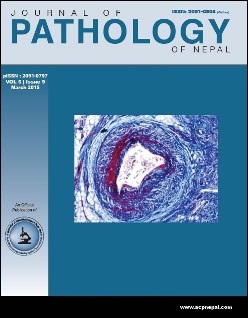Quality system for Medical laboratories
DOI:
https://doi.org/10.3126/jpn.v5i9.13793Abstract
According to William Edwards Deming “Good quality does not necessarily mean high quality. Instead it means a predicable degree of uniformity and dependability at low cost with a quality suited to the market.” Whereas according to famous engineer and management consultant Joseph M. Juran quality is “fitness for purpose”. It should meet the customers’ expectations and requirements, should be cost effective.
ISO began in 1926 as the International Federation of the National Standardizing Associations (ISA). The name, "ISO" was derived from the Greek word "isos" meaning "equal". (The relation to standards is that if two objects meet the same standard, they should be equal.) This name eliminates any confusion that could result from the translation of "International Organization for Standardization" into different languages which would lead to different acronyms.
In health sector, quality plays pivotal role, as it is directly related to patient’s care. Earlier time, health service was simple, quite safe but ineffective. Now health care system is an organizational system with more complex processes to deliver care. Medical laboratory service is an integral part in patient’s management system. So, for everyone involved in the treatment of the patient, the accuracy, reliability and safety of those services must be the primary concerns. Accreditation is a significant enabler of quality, thereby delivering confidence to healthcare providers, clinicians, the medical laboratories and the patients themselves.
ISO announced meeting in Philadelphia to form a technical committee to develop a new standard for medical laboratory quality. It took 7 years for the creation of a new Quality standard for medical laboratories. It was named as “ISO 15189” and was first published in 2003. The ISO has released three versions of the standard. The first two were released in 2003 and 2007. In 2012, a revised and updated version of the standard, ISO 15189:2012 (Medical laboratories – Requirements for quality and competence) was released. ISO 15189 is a globally recognized standard that help medical laboratories to develop their quality management systems and assess their competence. The standard is concerned with improving patient safety, risk mitigation and operational efficiency within medical laboratories, where they directly impact upon the continuum of care. To help it achieve this, ISO 15189 specifies quality criteria relating to both technical and managerial competence.
Accreditation not only helps patients but also health care organization. It stimulates to seek for continuous improvement and enables the health care organization in demonstrating commitment to quality of care. Furthermore it raises community confidence in the services provided along with international recognition of services. Ultimately it increases revenue of the institution.
Accreditation benefits all stake holders, patients/customers are the biggest beneficiary. It results in high quality of care and patients/customer safety as they get services by credentialed staff.
Accreditation ensures that rights of patients are respected and protected and their satisfaction is regularly evaluated.
Thus, Accreditation can be the single most important approach for improving the quality of health care structures. In an accreditation system, institutional resources, processes and outcome are evaluated continuously to ensure quality of services is maintained and improved on the basis of appropriated standards and regulatory requirements.
Downloads
Downloads
Published
How to Cite
Issue
Section
License
This license enables reusers to distribute, remix, adapt, and build upon the material in any medium or format, so long as attribution is given to the creator. The license allows for commercial use.




